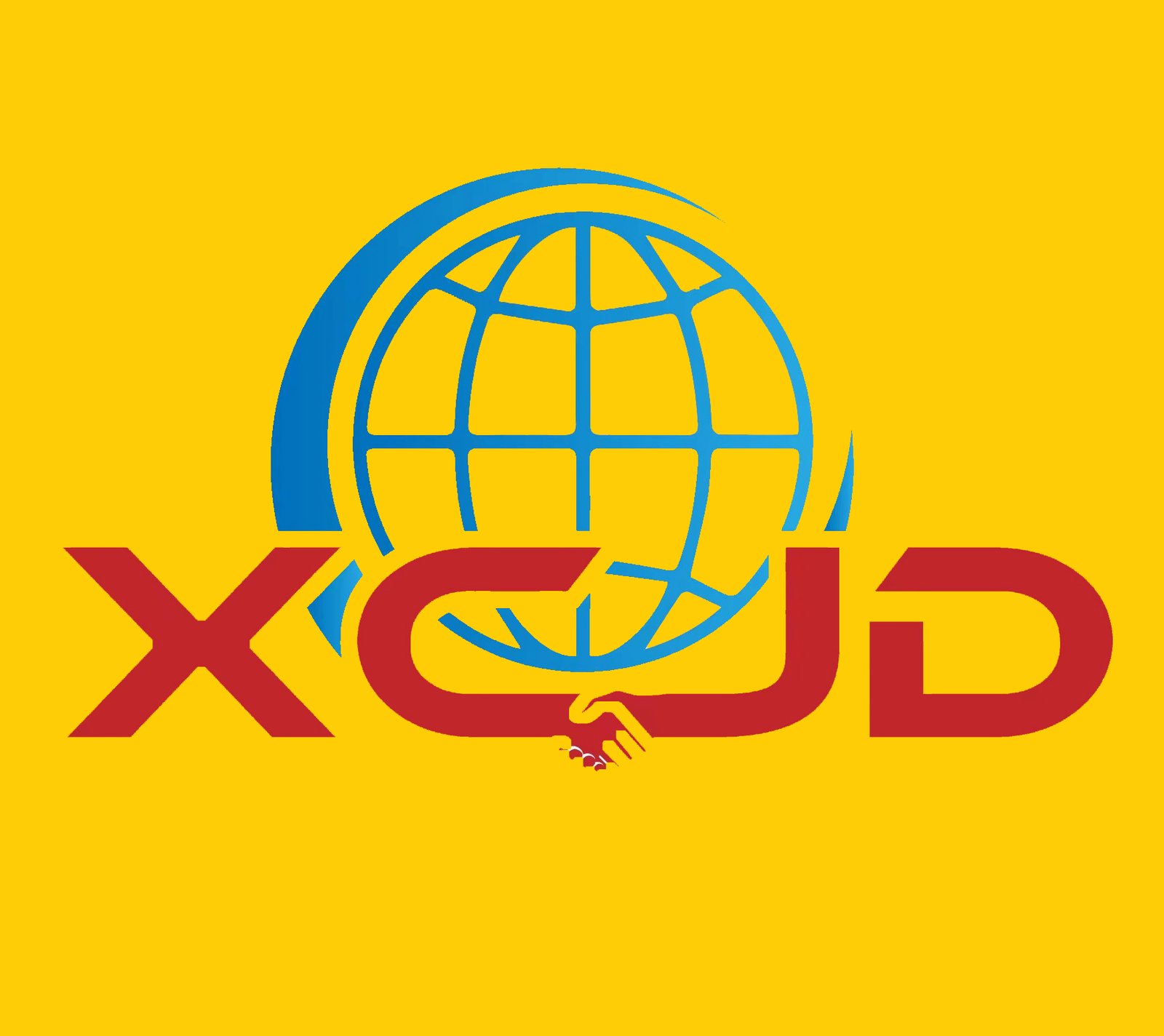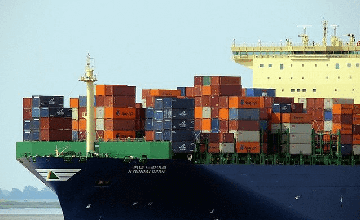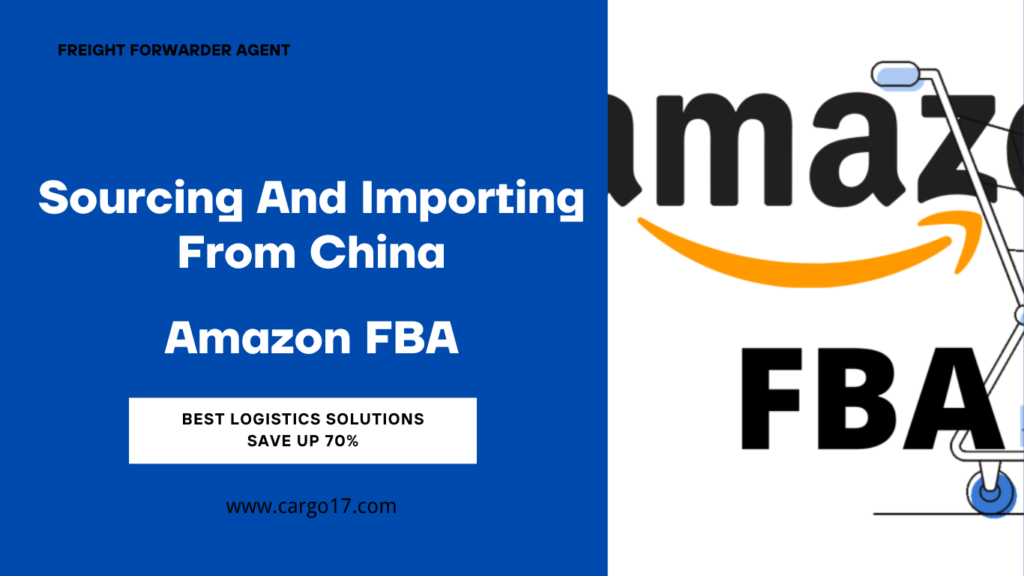ship from china to philippines
1. XCJD Global Logistics is a well-reputed and successful freight forwarder and shipping agent having operations all over the world. We will take care of your shipment in the most professional and consummate way.
2. XCJD can provide competitive prices and efficient customs clearance in all your shipments from China to the Philippines. Even you are personal or you do not want to use your company to import the shipping goods. XCJD will always provide you with the cheapest way to ship to the Philippines from China.
A Comprehensive guide shipping from China to Philippine
3. XCJD is very familiar with the Philipines market, we ship over 6,000Teu per year from China to the Philippines, You no need to provide us any documents, and we will send your goods to your Philippines warehouse or home. We also have the ability to do quick customs clearance in the Philippines.
4. XCJD will be your best freight forwarder China to the Philippines. We can handle every shipment from China to the Philippines from any port in China to any port in the Philippines.
5. Main seaports in China to Cebu, Davao, Fixed Schedule within time delivery, Main airlines from China to Manila, Cebu, Davao, Competitive air freight rate, Huge discount of DHL/FEDEX/TNT/ARAMEX, Collect cargo from different supplier with different city.
6. Our well-reputed shipping partners can make sure that the shipping of your goods from China to the Philippines fast, cost-effective, easy, and hassle-free! You can choose different delivery way free base on your requirement.
ship from china to philippines
You can ship cargo from China to the Philippines in the following two ways;
- By sea
- By air
Both countries are well connected via air and sea routes. Regular air and sea traffic are going on between the two catering to both passenger and cargo load. It is all set to grow further as China consolidates its position as a manufacturing hub of the world and the Philippines continues to grow with a rising urban middle class. We will discuss both these aspects of transportation in detail later in this article.
Shipping rates from China to the Philippines
The shipping rates from China to the Philippines depend on the route you opt to take and the bulk of your shipment. If you have a lot of containers you can get very cheap rates too. Thanks to the bevy of forwarders serving both the countries and preferential trade terms you can even get zero shipping charges. We are talking specifically ocean freight charges here. You will however have to pay the local destination charges.
The air freight charges depend on the volume and weight of the cargo.
Shipping time from China to the Philippines:
The shipping time (by sea) from China to the Philippines takes around 7-13 days. It all depends on the place of departure and the destination.
The air freight transit time is around 2-3 days. We will discuss all these in detail later in this article.
Choose shipping agent from China to the Philippines
To move your goods from China to the Philippines you will have to hire the services of a shipping and forwarding agent. There are hundreds of companies providing this service. This is a very competitive area where the customer is the king. He gets to choose the best company with the terms and conditions that best suit him. With the ever-expanding trade between the two countries, this business is set to grow further with more and more companies jumping in the fray.
Your best freight forwarder from China to the Philippines
XCJD is a well-reputed and successful freight forwarder and shipping agent having operations all over the world. We will take care of your shipment in the most professional and consummate way. Our team of dedicated professionals will rush to serve you in the best way possible. Our rates are most competitive and we provide value for money. We know our job very well. We have a presence in all the major countries of the world. We are uniquely positioned to provide excellent logistical support to your consignment right until its final destination. We provide the following services to our valuable clients;
Pick up & delivery:
We will pick the cargo from your given factory or warehouse. Our appointed forwarder will go to that address and will pick the goods for you. We can pick from anywhere in China. Our network of agents covers the entire country. We will then deliver the goods to the nearest port or the one appointed by you for the onward shipment of goods to the Philippines.
Customs clearance:
We can also clear the goods from the Chinese customs upon the payment of a small fee. We will get the goods examined by the customs and get the necessary documentation and NOC for exporting the goods from China to the Philippines.
Warehousing and distribution:
This is a very useful service where we provide storage facilities to our customers. Suppose you have placed orders with more than one factory or supplier. We will pick the goods from each supplier as and when they are ready and keep it in our warehouse. We will proceed with delivering your order when all your cargoes have arrived in our warehouse and then we will move the consignment.
Cargo insurance:
To safeguard your cargo against theft, loss, and other such mishaps it is better to insure it. Upon the payment of a small insurance premium, your cargo will be safe and secure.
Loading supervision:
Due to the mishandling and negligence of the port staff goods get broken. We will make sure that your goods remain in good condition and there are minimal damages on account of mishandling. We will treat your goods with the utmost care and attention.
Importing from China to the Philippines
China and the Philippines are very important trading partners. China has exported goods valuing between US$32-35 billion between 2018-2019. Philippines has also exported goods to China between US$13-14 billion in this period. The balance is tilted heavily in favor of China. China is now manufacturing everything and there is no shortage of buyers for its products. Let’s see what are the popular Chinese exports to the Philippines.
Popular products being imported from China to the Philippines:
The popular items of import from China to the Philippines are;
- Electronics and electrical equipment
- Machinery, boilers, nuclear reactors
- Iron & steel
- Different products made of iron or steel
- Plastics
- Mineral fuels, oil and distillation products
- Furniture
- Prefabricated buildings
- Lighting signs
- Ceramic products
- Organic products
- Motor vehicles
Restrictions when importing to the Philippines:
Like any other country, the Philippines also imposes restrictions on imports. There are certain items that you cannot import to the country or if you want to you have to obtain permission from the relevant authorities beforehand. Some of these items are;
- Explosives like dynamite, ammunition, gunpowder.
- Firearms, weapons of war, and their parts.
- Obscene or immoral material in written, printed, engraved, published, cinematographic or negative form, etc.
- Articles, instruments, and drugs, etc. intended to be used in unlawful abortion or any printed matter which provides information on the same.
- Items used in gambling like roulette wheels, loaded dice, marked cards, etc. are prohibited for import.
- Lottery and sweepstake tickets unless approved by the Philippines government.
- Items made of gold, silver, or other precious metal or their alloys which do not mention the fineness of the material.
- Adulterated or misbranded food articles or adulterated or misbranded drugs.
- Narcotics like heroin, opium, marijuana, or synthetic drugs or derivatives of such substances.
- Opium pipes and their parts.
- Used clothing and rags.
- Toy guns
- Hazardous and toxic goods
- Any written or printed matter that incites rebel against the Philippines government
- Infringing goods defined under the Intellectual property code and other related laws
- Any other goods whose importation has been prohibited and restricted by the government.
We will now look at the import procedure from China to the Philippines.
Registration:
The first and foremost is that you have to register yourself as a lawful importer with the concerned government agencies and departments. The Bureau of internal revenue will issue you an Import Clearance Certificate after due process. The second step is registering your business with the Bureau of Customs, there you will open an account in the Client Profile Registration System. The Import Clearance Certificate has a life of three years while the Client Profile Registration with the customs needs to be renewed every year. The renewal takes a maximum of 15 working days and a fee of around US$20 or P1000.
Process of import from China to the Philippines:
Find the right supplier: The process of import starts from finding the supplier that has the product you want at the quality and price you desire. You can find one online or you can visit China and find the factory you want. There are trade shows taking place every now and then in China. Visit the one that represents your industry and search the right supplier from there.
Negotiate: Once you have found the right supplier now you start dealing with him regarding the order. You have to negotiate with him on the quality of the product, price, payment terms, time of delivery, etc. Everything should be clear at this stage before you go on to the next one.
Order: Once all the terms and conditions have been agreed upon between you and the supplier you formally place the order. It is usually confirmed upon paying 30% of the order value, or as has been agreed upon between the buyer and the seller. You can pay the advance via TT, L/C, bank transfer, pay-pal, etc. It depends on the amount and the convenience of both parties.
Logistics: As the order nears completion, you now have to arrange a forwarding company that will move your cargo to your country. You get quotes from them and select the one that gives you the most favorable terms and rates.
Balance payment & shipment: After the order is finished, you ask your appointed forwarder to contact your supplier and pick your shipment from there factory or warehouse. You make the balance payment to the supplier and the order is picked and moved from China to the Philippines. The forwarder or the supplier will deal with the Chinese customs as it has been agreed between the two and then the goods are loaded on the ship and leave for the Philippines.
This is how the import process works.
Documents:
The importers must present a set of following documents to the customs when the goods arrive in the country;
- Bill of lading in case of sea shipment or airway bill in case of shipment by air
- Commercial invoice
- Packing list
- Import license
- Certificate of the country of origin
- Declaration of import for customs
Other documents:
A separate Certificate of Product Registration issued by the Philippines’ Food and Drug Administration is required for stuff like plants, medicine, chemicals, foodstuff, and animals.
How to calculate import tax and duties in the Philippines?
- The Philippines adheres to the Standard International Trade Classification (STIC) system of the United Nations.
- Import tariffs can vary from 0-6
- To protect the local industry, import duty is charged high at certain items.
- A value-added tax or VAT is charged at 12% on imported items.
- For goods other than agricultural, the average import tariff is 6.7%.
- Goods valuing less than or equal to US$200 has no duty or taxes.
- All the tariff-related information on imported items is available online at the Philippines tariff commission’s web portal.
Philippines Customs Regulations:
First of all, you need to be a registered and accredited importer with the Bureau of Customs (BoC). You can access the BoC’s electronic system and submit your entry for customs clearance and then gauge its movement and progress. Although, you will still be required to submit hard copies of all the import documents.
Documents:
All importers are required to present the following documents for clearance of their goods by the customs.
- Commercial Invoice
- Letter of Credit, or any other document giving proof of your payment. If there is no document and in fact no sale against export took place, then a commercial document that shows the value of the goods is required.
- Bill of Lading (for sea freight)
- Airway bill (for air freight);
- Packing List;
- A duly notarized supplemental declaration on valuation (SDV)
- Applicable special certificates required;
Additionally, the custom may ask for some additional documents for special import items
- Import license or permit
- An authority letter to release the imported goods
- Copies of free trade agreements (FTAs) where applicable
- Copy of an advance ruling by the competent and lawful authority, if the ruling was previously used in the declaration of goods
- Survey reports at the ports of loading and discharge for bulk or break-bulk imports
- Documents declaring exemption from taxes etc.
- A tax credit certificate (TCC), or tax debit memos (TBM).
Classification of shipments
For their clearance the Philippines customs divides the shipments under the following three categories;
- Low-risk shipments
- Moderate-risk shipments
- High-risk shipments
Low-risk shipments: They require no physical or documentary inspection and are passed through a customs channel called “green lane”.
Moderate-risk shipments: A moderate-risk shipment requires documentary review and is passed through the customs channel called “yellow lane”.
High-risk shipments: They require both physical and documentary inspections and are passed through what is called “red lane”.
If a shipment requires post-clearance inspection and audit it passes through the “blue lane”.
Shipping time from China to the Philippines:
The transit time usually ranges from 7-13 days depending on where the port of departure is to the port of discharge. It also depends on the peak trading season, rush and availability of vessels, and favorable or unfavorable weather. We can summarize the transit time by the sea in the form of the following table;
| Manila | Cebu | Batangas | Davao | |
| Hong Kong/Shenzhen | 9 days | 10 days | 9 days | 11 days |
| Shanghai | 10 days | 11 days | 10 days | 12 days |
| Ningbo | 10 days | 11 days | 10 days | 12 days |
| Xiamen | 9 days | 10 days | 9 days | 11 days |
| Qingdao | 11 days | 12 days | 11 days | 13 days |
| Dalian | 7 days | 8 days | 7 days | 9 days |
| Tianjin | 12 days | 13 days | 12 days | 14 days |
Sea freight from China to the Philippines
Sea freight depends on the size of your shipment, trading season, and the speed of the shipping vessel. China shares maritime borders with the Philippines. The rate can be US$50 per shipment to absolutely nothing. You will be charged the destination charges when the goods reach the Philippines.
Main seaports in China:
China has many seaports and the government keeps upgrading them to cater to the ever-growing business needs. Some of the famous seaports of China ae the following;
Hong Kong:
Hong Kong is one of the world’s busiest and at the same time very efficient seaport. It offers 400 container services in a week to more than 500 destinations around the world. The port handles around 90% of Hong Kong’s total cargo throughput
Shanghai:
Shanghai is the gateway to China. It is a seaport of choice for all the exporters and importers of China. No wonder it is the largest container port in the world. It has both shallow and deep-water zones. It is open throughout the year and handles its operations efficiently. Cargo meant for the Philippines also mostly uses this port.
Shenzhen:
Shenzhen was once a sleepy little fishing town, well not anymore. Today it is a bustling port city and its seaport is among the top 5 busiest seaports of the world. Ships move to every direction in the world from Shenzhen. As a matter of fact, 150 major shipping routes originate or end in Shenzhen. That vouches for its significance and strategic position.
Xiamen:
The port of Xiamen is an important deep-water port. It handles traffic along the mainland coast and adjacent to the south from the Fujian province. It also has an economic zone which is one of the country’s first economic zones. It is the 8th busiest container port in China. Its location makes it an ideal stopover point for ships traveling to and from Taiwan, Hong Kong, and other southeast Asian countries.
Ningbo-Zhoushan:
Ningbo is situated in Zhejiang province and Zhejiang province is bordered by Jiangsu province. Both are industrial provinces and this port is ideally located to serve both of them. It is a big and busy port, in fact, it is the third busiest port of China and the fourth busiest in the world. It can accommodate large vessels and efficiently oversee their operations.
Zhuhai:
It is an emerging seaport in China and already has 130 berth spaces. It is located in the south of the country and serves the cargo coming in and going out from the southern regions of the country.
Qingdao:
The port of Qingdao is a world-class port having all the facilities of a modern seaport that includes loading/unloading, storage, and logistics for containers. It is an important hub of international transportation and trade along China’s Pacific coastline and within the Yellow River region. It is connected to 450 ports around the globe.
Guangzhou:
The port of Guangzhou is South China’s biggest port. It annually handles millions of tons of cargo from around the world. The Chinese government intends to make it an international container port hub. It has all the modern amenities needed for a successful seaport.
Tianjin:
The port of Tianjin is another important part of China. It is like a maritime gateway to the capital Beijing as it is located 170 kilometers southwest of Beijing. It is a big port with the ability and capacity to handle container cargo, vehicles, general cargo and liquid, and dry bulk.
Main seaports in the Philippines:
Now we shift our focus to some of the major seaports of the Philippines.
Manila:
The port of Manila is the busiest port of the Philippines. It is the gateway to the country with the rest of the world. Most of the international cargo and coming in and going out of the country uses this port. It is equipped with all the modern facilities and is poised to expand and grow further.
Cebu:
Cebu is an important seaport of the Philippines with connectivity with the rest of the world. Cebu city is also easily well connected with the rest of the world. Cebu is a large port with cargo handling, storage, and logistics services.
Iloilo:
The port of Iloilo is located in the center of the country. It is thus ideally positioned to be an important center of trade and commerce. It has already become a major seaport of the Philippines. It annually welcomes thousands of domestic and foreign ships and handles millions of tons of cargo.
Subic:
The port of Subic occupies an important position in Asia’s sea routes. It is a good alternative to the always busy Manila port. It is a free port with no local or national taxes. It enjoys a natural deep-water harbor that makes it attractive for shipping activities.
Batangas:
The port of Batangas is another important seaport of the Philippines. It has been upgraded and rehabilitated by the government in the early 2000s to provide another port to handle the load of the country’s international trade. It has been operating ever since with ever-increasing oceanic traffic vouching for its utility.
Airfreight from China to the Philippines
Airfreight from China to the Philippines depends on the weight and volume of the cargo. It is an expensive mode of transportation; you should opt for it only if you are in a hurry to receive your goods. If you are goods are less than 2 CBM in volume and 200 kg in weight, then going for air transport would be a viable option.
Transit time from China to the Philippines:
Transit time from any Chinese city to any city in the Philippines is 2-3 days.
Main airports in China:
We will now look at some of the major airports in China;
Shanghai:
Shanghai is the business and financial hub of China. It is a megacity with two modern airports. Pudong airport was constructed later to cater to the city’s growing air travel needs. The airport has a modern infrastructure and is one of the busiest in the world. It is connected directly to the Philippines and several Chinese carriers fly to and fro these two countries.
Beijing:
Beijing airport was given a major facelift that included a new terminal and runway when the Olympics were held there. It is again a very busy airport that is connected to major international destinations. The Philippines is no exception as there are flights to major Philippines cities from there.
Chengdu:
Chengdu is fast emerging as an aviation hub in China. Its airport is now the fifth busiest in China. The airport is well-equipped to handle the air traffic and is linked to the Philippines.
Qingdao:
Qingdao is situated in Shandong province. It is an important air transit center in China. It currently serves 23 international destinations and the number is likely to grow in the future. The airport has two terminal building and there are talks of expanding it further.
Guangzhou:
Guangzhou is an important trade and business city in the south of the country. It is the capital of Guangdong province as well. Guangzhou has a big and busy airport and it has direct links with all the major cities of the world. The city hosts a mega trade show twice a year that sees the whole of China’s industry converge there.
Shenzhen:
Shenzhen airport is serving Guangdong province and is the fifth largest airport in China. It serves 150 domestic and 21 international routes. It has a fairly modern infrastructure and is handling cargo and passenger load very well.
Xiamen:
Xiamen is connected with 71 domestic and 12 international cities. It has direct linkages with the Philippines cutting the travel cost between the two countries.
Hong Kong:
Hong Kong is a major aviation hub. It is well connected with the rest of the world. It has a large and modern airport capable enough to handle large volumes of cargo and passengers. Hong Kong is served by all the major international airlines.
Main airports in the Philippines:
The Philippines has its share of well-equipped, modern, international airports. Let’s take a look at some of them.
Ninoy Aquino International airport:
It is the new name of the Manila International airport, although few call it by its new name. It is the country’s busiest airport with ongoing flight operations for both passenger and cargo flights. It is the hub for the Philippines’ import and export cargo handling, processing, and storage facilities and it does an effective job of doing it.
Clark International airport:
Clark international airport is located in the Clark Freeport Zone in the province of Pampanga. The airport has been built on an old US air force base which was abandoned following a volcanic eruption nearby. Since then, the airport has seen constant up-gradation and modernization. Its 2025 master plan envisages it to be a major Asian airport with an annual 110 million passengers handling capacity and 4 runways.
Laoag International airport:
It is the main airport for Laoag City, Ilocos Norte. It is located at the northernmost tip of the Philippines and is the only airport in the northern province. It is popular among tourists, especially from China.
Kalibo international airport:
Kalibo international airport is located in Aklan province and caters to the needs of that province and adjoining areas. It is one of the busiest airports for the western part of the country. It has been expanded and upgraded to meet growing air traffic.
Iloilo airport:
Iloilo airport started operations in 2007 after the old airport was replaced by a leisure park and residential complex. Iloilo serves the western and Panay island region. It is among the 5 busiest airports in the Philippines. It is also one of the country’s best having direct flights to Hong Kong and Singapore.
Mactan-Cebu International airport:
It is the second busiest airport in the Philippines after the capital of Manila’s airport. It was upgraded and a new terminal was opened in July 2019. The new terminal enhanced the passenger handling capacity to 12.5 million annually. The airport is well connected with major regional and international destinations. It has all the modern infrastructure to handle passenger and cargo traffic.
Shipping from China to the Philippines tax
Due to the signing of FTA agreements between both countries, most of the items being imported from China are subject to 0% duties. A 12% VAT may be added on the goods value and/or any other destination charges.
Ways of shipping from China
FedEx shipping from China to the Philippines:
FedEx is a major international courier company. It serves the length and breadth of both countries. The delivery time is 2-3 days like most courier companies. The rates are higher than usual air freight but the goods will reach safer and faster. The courier will take care of all the documentation and custom clearance processes. If you want something quick and the package weighs less than 200 kg or 1 CBM then you may opt for this option.
DHL shipping from China to the Philippines:
DHL is arguably the most popular company for distributing your parcels and packages around the world. It can deliver anything from anywhere within 3-5 business days. It is a fairly reputed and reliable company. Its rates are also among the highest.
UPS shipping from China to the Philippines:
UPS is another American package delivery service company. It also effectively covers the entire world, where it is not present it has partnered with local or other courier companies to deliver to the customers. Both China and the Philippines have UPS operating in their respective countries.
TNT shipping from China to the Philippines:
TNT also operates in both these countries with almost the same terms and conditions and level of service. You can select any courier service you like. Their charges and delivery time are almost the same. They compete with each other in terms of quality of service and customer satisfaction.
EMS shipping from China to the Philippines:
EMS is a state-owned courier delivery service. Its rates are cheaper than all the above companies. But its transit time is longer too. If you do not want a quick delivery you can try it. The package would take longer than other courier companies but faster than regular or registered mail.
Standard express from China to the Philippines:
It is a good and economical dispatch service specially meant for countries surrounding the mainland China. It promises fast and timely delivery with a guarantee. You can also use it for door-to-door dispatch of your parcel from China to the Philippines.
Alibaba shipping to the Philippines:
Alibaba has established itself as a number source of finding quality Chinese manufacturers and suppliers. You can ask your factory to send the goods to your appointed forwarder’s warehouse who will arrange shipment for you. For this, you need a reliable forwarder like XCJD Logistics.
Door to door shipping from China to the Philippines:
Door to door shipping means your consignment will be picked from your appointed factory or warehouse’s address and will be delivered at your given address. The forwarder will arrange shipment, customs clearance, and everything in between. It is a good way to procure your shipment as you will not have to deal with a lot of companies in different steps of the import process. We at XCJD Logistics will provide you this valuable service at a very affordable price.
FCL shipping from China to the Philippines:
FCL stands for a full container load. A container could be of 20 or 40 feet in length. You book a full container when your cargo has volume or weight or both to fill a container. A 20’ container can hold approximately 28 tons and 40 feet has a capacity of 30 tons. The shipping company will charge you a flat rate for container fee. Your booked container will only hold your cargo. It will be opened only once it reaches its destination. There won’t be any stuffing or de-stuffing done in your container. For fragile, heavy, or goods with a large volume, a container is usually preferred.
LCL shipping from China to the Philippines:
LCL stands for less container load. LCL comes into the picture when your cargo is not large enough to fill a container on its own. It has to share space in the container with other cargos. When booking an LCL shipment the shipping company will charge you on the basis of weight or size (CBM). Sometimes LCL shipment gets expensive because of the overhead costs that are difficult to absorb. The goods too are more likely to get damaged or mishandled in an LCL shipment than an FCL one. LCL shipment can be carried out in the following ways;
- Door-to-door
- Port-to-port
- Door-to-port
At XCJD Logistics, we take care of both the LCL and FCL shipments. We charge very nominal rates for both these services. Our cut-off time is the shortest and transit time is also chosen to keep in view the expediencies of international trade.
Shipping companies from China to the Philippines:
There are a lot of shipping lines plying between China and the Philippines. Some of the more popular ones are;
- COSCO shipping line
- Sino trans
- China Shipping Development
- China Shipping Group
- China Shipping Container Lines
- China International Marine Containers
- China Merchants Energy Co.,
- MSC
- Yang Ming Marine Transport Corp.
- Zim
Freight Forwarders from China to the Philippines:
Likewise, hundreds of freight forwards will offer you their services in both these countries. The field is highly competitive with companies vying for business and customers. The key is to ensure maximum customer satisfaction along with the minimum best possible price.
FAQs
Q: How many days it will take for my shipment to reach from China to the Philippines.
A: You can receive your shipment anywhere from China to anywhere in the Philippines in 14 days.
Q: What is the cheapest shipping from China to the Philippines?
A: It depends on your negotiating skills, time, and volume of the shipment.
Q: How long does EMS take to reach from China to the Philippines?
A: It will take between 5-10 days.
Q: How to order from Alibaba to the Philippines?
A: You will need the services of a good forwarder and then you can do this.












